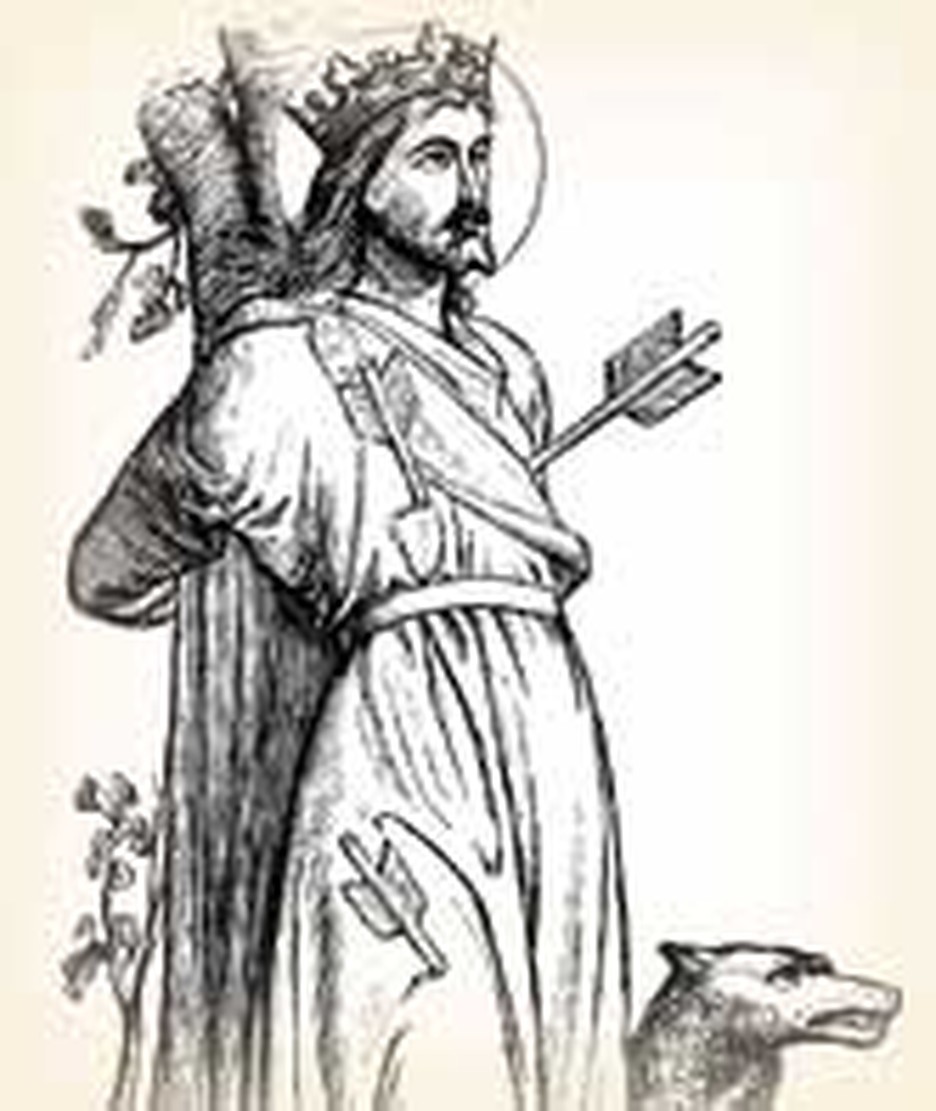
On this year the [Danes] rode across Mercia into East Anglia and took winter quarters in Thetford. And the same year King Edmund fought against them and the Danes had the victory; and they slew the King and overran the entire kingdom." That is all that the Anglo-Saxon Chronicle, written within twenty years of the events, had to say about King Edmund's death.
Danish invaders killed Edmund on this day, November 20, 869. Within thirty years, the common people had fixed him firmly in mind as a martyr and a saint. A special coin was minted for him. His burial site became a place of pilgrimage.
The Chronicle may have said little and Asser's famous Life of Alfred not much more, but popular accounts said a great deal. According to stories that were embellished as the years went on, Edmund was a godly English king--so godly that he even memorized David's Psalms to guide him in governing his people with justice.
When the Danes invaded in 866, Edmund struggled to hold his little state against them. He built a dike that held them back for a few years. But when he repulsed the Danish chiefs Hinguar and Hubba, they gathered a larger force against which he could not stand. The Danes insisted on terms of surrender that, as a Christian, Edmund could not accept. Realizing that his armies could not defeat the invaders and not wanting to be the cause of a pointless massacre of his own men, Edmund sent them home. While making his own escape, he was overtaken by Danes.
"Have you seen Edmund?" they asked. Not wishing to lie, Edmund responded with a riddle. His identity was soon recognized, however, and he was taken before the Danish chief Hinguar (also called "Ivar the Boneless" or Ingvar).
Again he refused to submit to pagan conditions. He said that his faith was dearer to him than life, and that he would never purchase his life by offending God. Infuriated, the Danes beat him with sticks, then tied him to a tree and tore his flesh with whips. Next they shot arrows into him until he looked like a "thistle covered with prickles."
The Danish leader finally whacked off the young king's head with an axe. Having been crowned king on Christmas day in 855 at fourteen or fifteen years of age, Edmund died while still in his mid twenties.
Supposedly the Danish leader flung the head into some brambles. Later, when the English crept out of hiding, they found a wolf protecting the head.
Bury St. Edmund, to which the king's body was eventually moved, became a major English religious center.
Bibliography:
- "Edmund the Martyr." http://www.pitt.edu/~eflst4/stedmund.html
- File notes from biographies on Alfred the Great.
- "King Edmund the Martyr." http://www.saint-edmunds.org/stedmundhistory.htm
- "Legend of St. Edmund." http://www.burystedmunds.freeserve.co.uk/ SurvivalKit/Motto.htm
- "Lives of Sts Edmund and Fremund." Canon of John Lydgate Project. http://www.ualberta.ca/~sreimer/edmund/intro/int3.htm
- Phillips, G. E. "St. Edmund the Martyr." Catholic Encyclopedia. New York: Robert Appleton, 1914.
- "Sacrarium Regis: Shrine of a King. The History of the Legend of St. Edmund." http://www.stedmundsbury.gov.uk/stedmund.htm
Last updated June, 2007


